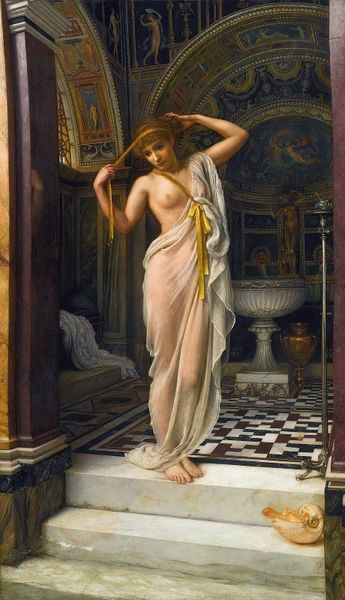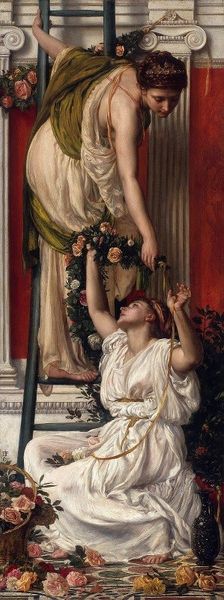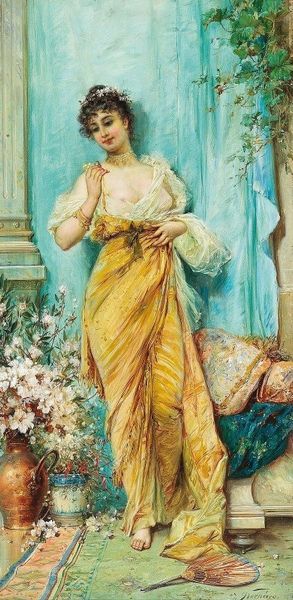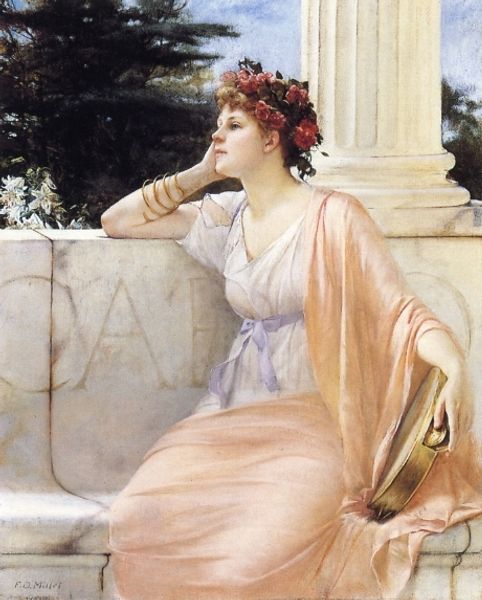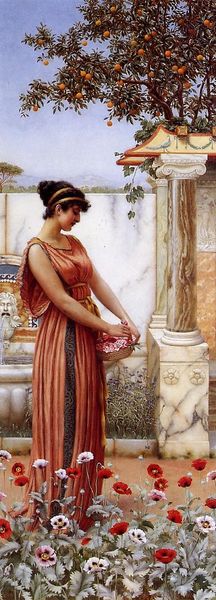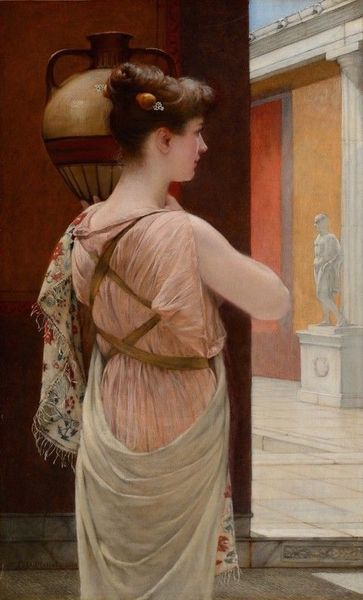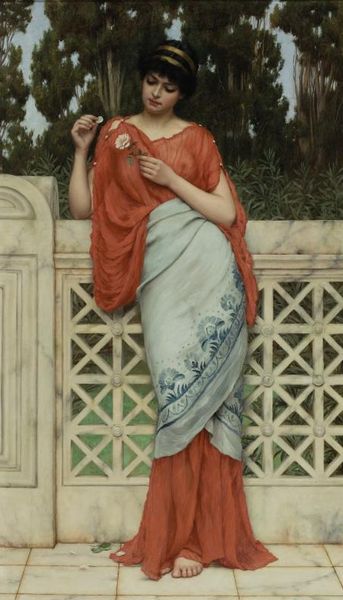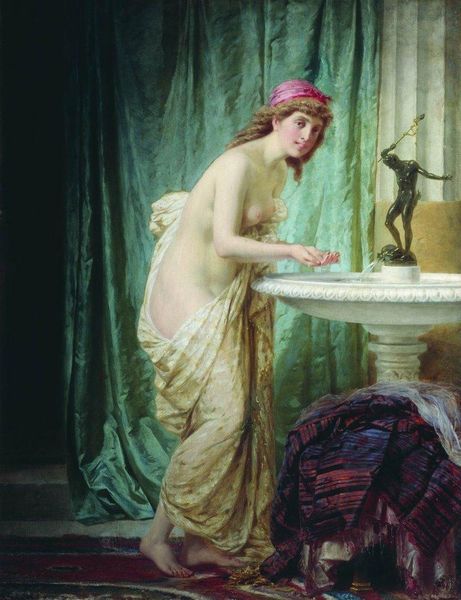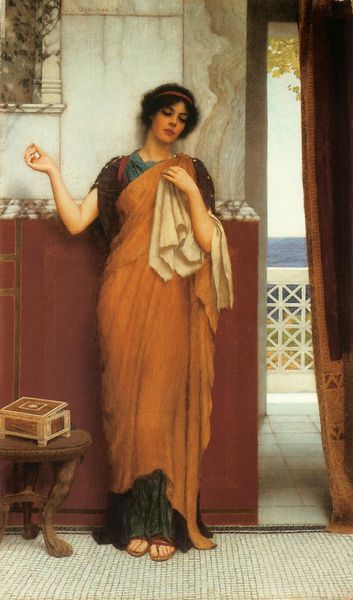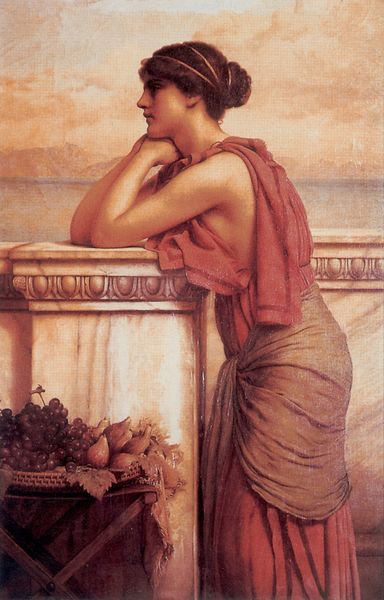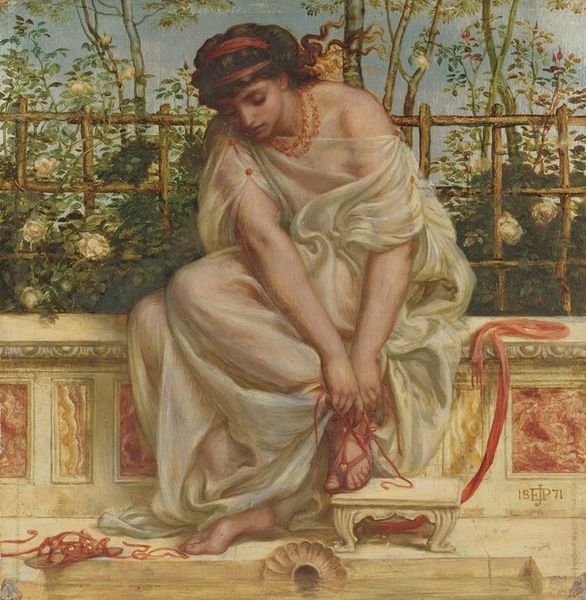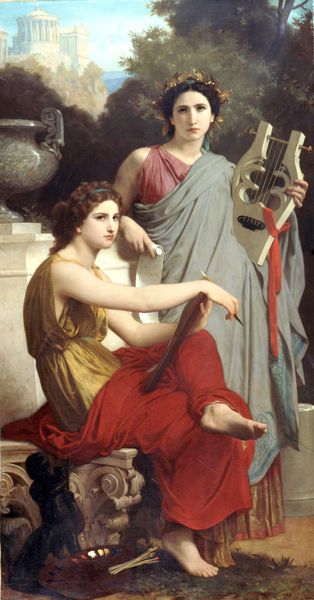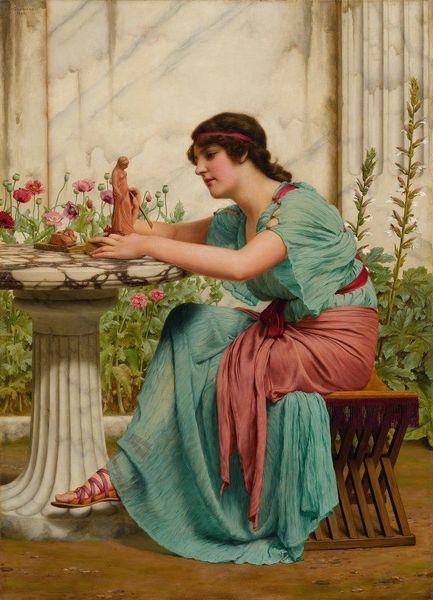
Copyright: Public Domain: Artvee
Editor: Here we have Edward John Poynter's *Psyche* from 1884. It’s done in watercolor, which gives it this luminous quality. I’m really drawn to her melancholic expression, it gives a quietness to the painting. What stands out to you when you look at it? Curator: The interesting thing to consider is what Psyche, the figure from ancient Greek mythology, actually *represents.* This melancholic mood you point out is key. Psyche personifies the human soul, so think about that; what does that imagery, and *that* color, suggest about the soul's state in this era? Editor: Hmm, sadness? Is she longing for something? I guess that makes sense since she’s pulling back the curtain. Curator: Exactly! The curtain serves as a threshold, doesn't it? Consider that in many ancient cultures, including Greece and Rome, red was associated with vitality, passion, but also sacrifice and mourning. The very *act* of revealing… of Psyche parting the curtain with trepidation... it speaks volumes. Are we, perhaps, looking at the human soul tentatively seeking truth beyond the veil of the familiar, while carrying all that emotion you identified? Editor: I didn't think about the colour symbolism, or the act of revealing. I see it a bit differently now, she is burdened, but hopeful at the same time. Curator: Indeed, it's the push and pull between those duelling emotional states that makes this a timeless depiction of the human experience. Every color, every object carries so much psychological freight if you just look beneath the surface. Editor: Thanks! I’m going to remember this way of looking at art for sure!
Comments
No comments
Be the first to comment and join the conversation on the ultimate creative platform.
